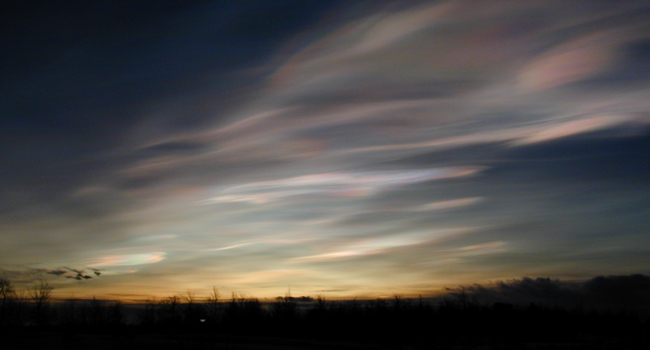A .gov website belongs to an official government organization in the United States.
A lock () or https:// means you've safely connected to the .gov website. Share sensitive information only on official, secure websites.

CSL stratospheric research has four focal points: (1) developing and using instrumentation to measure key species such as ozone, black carbon, aerosol composition, water vapor, and sulfur dioxide; (2) understanding the chemistry, composition, and transport within the upper troposphere and lower stratosphere; (3) developing and using atmospheric models to understand the radiative and dynamical coupling of the stratosphere and troposphere; and (4) studying the relationship between climate change and changes in the stratosphere.
CSL improves understanding of stratospheric composition and chemistry and the impacts of stratospheric processes and changes on the tro-posphere (e.g., climate, weather, etc.)
There is strong evidence that climate change and changes in the stratosphere are related. Examples of this include the connection between the recovery of the stratospheric ozone layer and climate change, connections between increases in stratospheric water vapor and surface temperature changes, and changes in stratospheric circulation that influence, and are influenced by, climate change. It is also clear that stratospheric changes affect surface weather. For example, sudden stratospheric warming events in Arctic winter can induce extreme cold-air outbreaks over large regions at the Earth's surface. Finally, the stratosphere has become a focal point for climate intervention strategies.
After decades of study, there is still much to learn about the chemical composition of the stratosphere and the chemical and physical processes that occur in this upper region of the atmosphere. In large part, these gaps of understanding are due to the difficulty of obtaining high quality observations. CSL has had long-standing collaborations with NASA to instrument high-flying aircraft to study stratospheric aerosol, ozone, and water vapor. The interest in understanding the chemistry and budget of sulfur in the stratosphere is increasing. Historically, research opportunities for this work came about from major volcanic eruptions. Currently there is much discussion of intentional release of sulfur species to the stratosphere to enhance sulfate aerosol abundance and mitigate global warming. Policy decisions of whether or not to implement these interventions would benefit from a full scientific understanding of the stratospheric sulfur cycle in order to determine the optimal approach and what unintended consequences may arise.
With state-of-the-art instrumentation and inventive collaborative approaches for in-situ sampling, CSL is advancing the scientific understanding of the stratosphere. These cutting-edge observational activities are intimately linked to advanced numerical modeling approaches used by CSL scientists. CSL modeling research uses in-situ and satellite data, as well as reanalyses of existing data, to further understand the causes and consequences of changes in stratospheric composition and dynamics that affect climate, weather, and climate intervention proposals.
CSL makes ongoing contributions to (1) advancing scientific knowledge regarding the processes involved in ozone-layer depletion by chlorofluorocarbons and other compounds, (2) assessments of the state of knowledge regarding stratospheric ozone, and (3) communication of that information to policymakers in formats that are useful to their decision-making process. For example, CSL continues its long tradition of co-leading state-of-understanding scientific assessment reports of stratospheric ozone depletion for decision-makers, a role it has played since the inception of the United Nations Montreal Protocol, the 1987 international agreement that protects the ozone layer. U.S. policy makers, the U.S. chemical industry, EPA, and other national and international agencies rely on these scientific assessments as a basis for development of scientifically sound, well-informed policies.